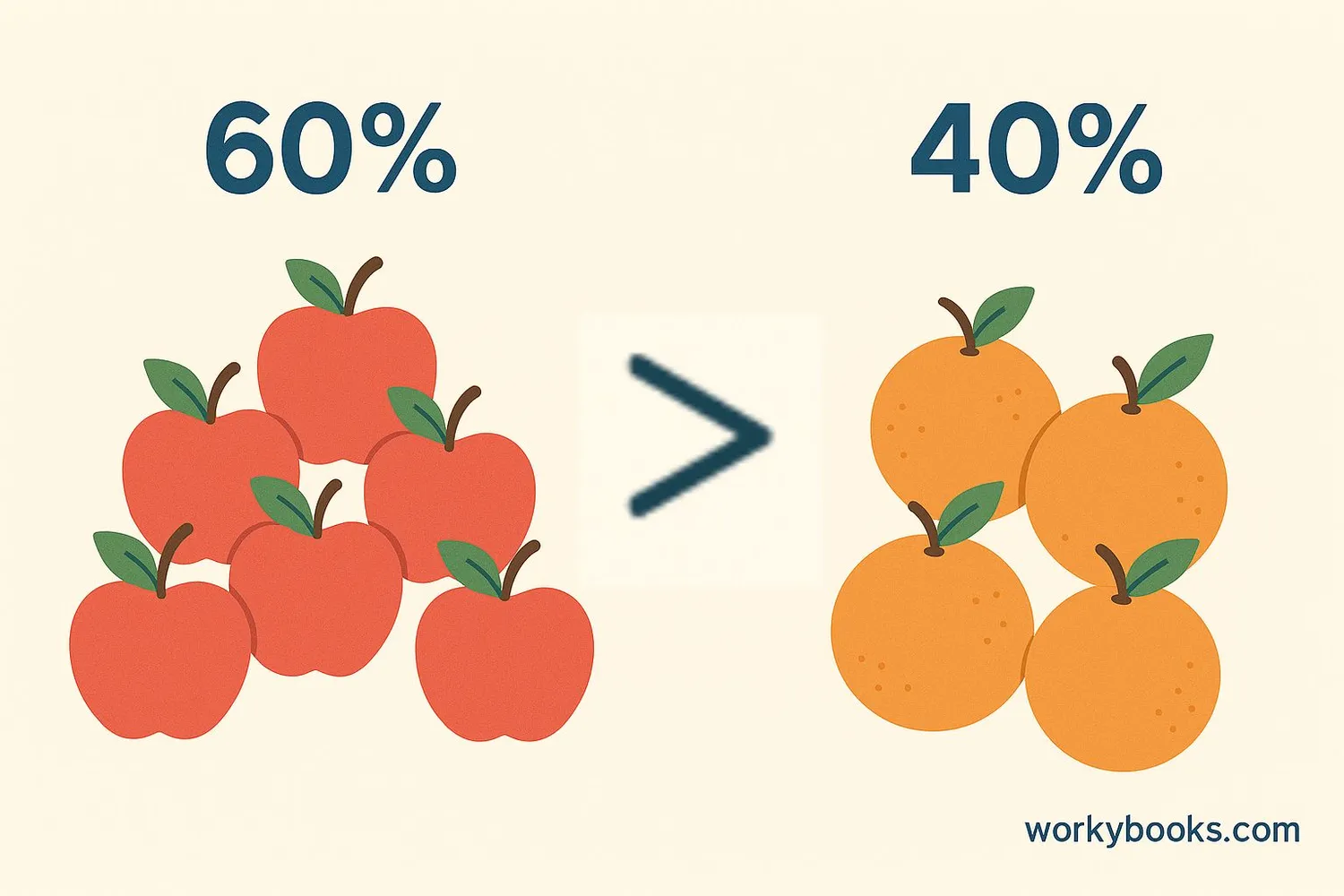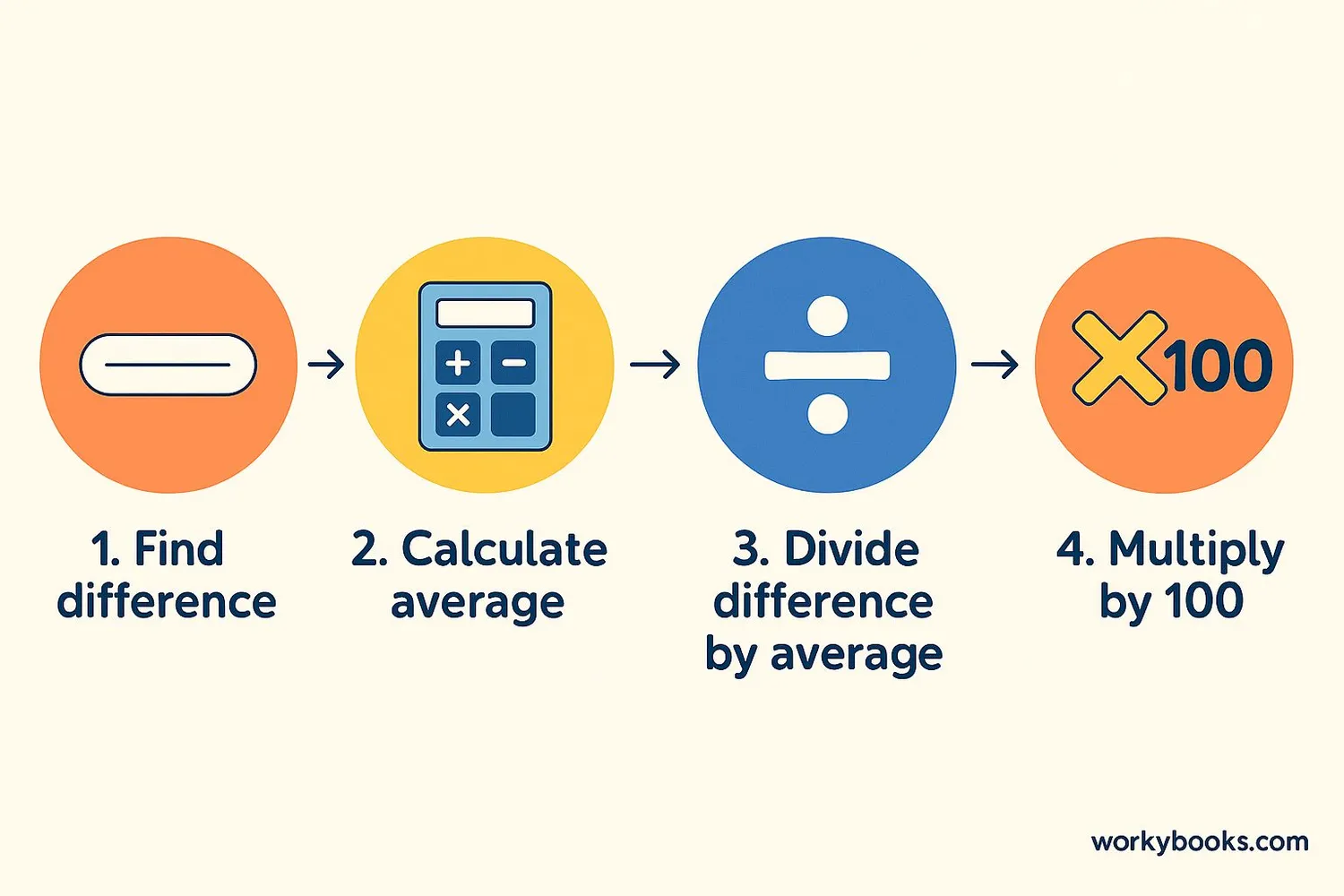Calculate Percent Difference - Definition, Examples, Quiz, FAQ, Trivia
Learn to compare values using percentages with easy explanations and practice activities
What is Percent Difference?

Percent difference is a way to compare two values to see how much they differ, expressed as a percentage of their average. It helps us understand the size of the difference relative to the typical size of the values.
We use percent difference when we want to compare two different measurements of the same thing, like:
- The height of two different trees
- Prices of the same item at two stores
- Results from two science experiments
Percent difference is always positive because we care about the size of the difference, not which value is larger.
Key Concept
Percent difference = (|Value1 - Value2| ÷ Average) × 100%
How to Calculate Percent Difference

Calculating percent difference is simple when you follow these steps:
Percent Difference Formula
Where |A - B| means the absolute difference (positive value)
- Find the difference between the two values (always positive)
- Calculate the average of the two values: (Value1 + Value2) ÷ 2
- Divide the difference by the average
- Multiply by 100 to convert to a percentage
Example: Compare 10 and 15
Step 1: |10 - 15| = 5
Step 2: Average = (10 + 15) ÷ 2 = 12.5
Step 3: 5 ÷ 12.5 = 0.4
Step 4: 0.4 × 100 = 40%
So the percent difference between 10 and 15 is 40%.
Remember
The percent difference is always positive and shows how much two values differ relative to their average size.
Real-World Examples

Let's practice with some real-world examples:
Example 1: Price Comparison
A video game costs $50 at Store A and $45 at Store B. What's the percent difference?
Difference = |50 - 45| = 5
Average = (50 + 45) ÷ 2 = 47.5
Percent Difference = (5 ÷ 47.5) × 100 ≈ 10.53%
Example 2: Height Comparison
Sarah is 150cm tall and her brother is 165cm tall. What's the percent difference?
Difference = |150 - 165| = 15
Average = (150 + 165) ÷ 2 = 157.5
Percent Difference = (15 ÷ 157.5) × 100 ≈ 9.52%
Example 3: Science Experiment
In one experiment, a plant grew 12cm. In a second experiment, it grew 15cm. What's the percent difference?
Difference = |12 - 15| = 3
Average = (12 + 15) ÷ 2 = 13.5
Percent Difference = (3 ÷ 13.5) × 100 ≈ 22.22%
Practice Tip
Try calculating percent differences for measurements you find around your home - the length of different pencils, weights of fruits, or sizes of books!
Interactive Percent Difference Calculator
Try out the calculator below to practice finding percent differences. Enter two values and see the result!
Calculator Tip
Try comparing numbers that are close together and numbers that are far apart. Notice how the percent difference changes!
Percent Difference Practice Quiz
Test your understanding with this 5-question quiz. Choose the correct answer for each question.
Frequently Asked Questions
Here are answers to common questions about percent difference:
Math Trivia
Discover interesting facts about percentages and measurements:
Origin of Percentages
The concept of percentages dates back to ancient Rome where computations were made using fractions of 100. The term "percent" comes from the Latin "per centum," meaning "by the hundred."
Scientific Measurements
Scientists use percent difference to compare experimental results with accepted values. A small percent difference indicates accurate measurements, while a large difference may suggest errors or new discoveries.
Business Applications
Businesses constantly use percent difference to compare sales figures, profit margins, and growth rates between different time periods, products, or locations.
Measurement Precision
The most precise measurement ever made was of the electron's magnetic moment, accurate to within 0.00000000000000028%! Percent difference helps scientists express such tiny variations.





